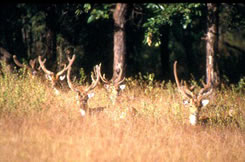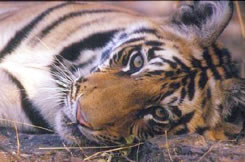Yala National park goes back to the days of great kingdom of Ruhuna or Rohana as it was then known. It is presumed that during that time, the present area of National Park must have been a developed and populated. The large number of ruins of ancient temples, monasteries and other secular buildings that one sees within or outside the park bear testimony to this. There is tanks alongside this national park which supply the irrigation water to the surrounding paddy field including the one of Yala Park . For many centuries the area remained unattained which took shape of dense forest. During British reign it was declared as Residential Sportsmen Reserve. On 25th February 1938 , the British Government declared it as the National Park and gave total protection to its Flora and Fauna. The park now covers an area of over 100,000 hectares and is divided into five blocks. Block one is the most visited area since it contains the highest density of leopards. However other areas of Yala such as Yala East had been closed to visitors for some years and it will take time to research leopard numbers in these areas. Yala West consists of scrub jungle, brackish lagoons and stunning rock monoliths scattered throughout the park, its eastern edge is bounded by the South East coast .
At present theYala West (Ruhuna) National Park is well recognized as one of the best parks in the world to observe and photograph leopards. The best chance to see a leopard is generally early in the morning and then again at dusk. You can stay until just after dark inside the park, thus maximizing your chances of a leopard encounter. The male leopards in Yala are very confident and are often seen walking the tracks during the day.
Mammals : Block one this Park is the most visiting area since it contains the highest density of leopards.Apart from the leopard, there is also a substantial elephant population along with spotted deer, sambar, wild buffalo, sloth bear, jackal, mongoose, pangolins and crocodiles .
Birds : The bird life comprises over 120 species, and ranges from lesser flamingos to Paradise Flycatchers, Crested Hawk Eagles, and Black Bitterns. Outside of the park are several other fascinating birding locations, including the ancient hermitage of Sithulpahuwa, Debarawewa wetland and Palatupana saltpans. The coastline forms a major nesting ground for marine turtles.
Mode of Safaris : We will observe the wildlife from 4X4 wheel driven open Suzuki Jeeps.
Excursion Timings : Park can be accessed from dawn to dusk except few hours in the after noon when it is warm for wildlife to move.
Evening Activities : 1) Share the experience and encounters in the wild with people living here.
2) Astronomy: Study of star constellations and planets with telescope.
Visit to the Yala National Park : Throughout the year except the months August to October for when the park remains closed. |

